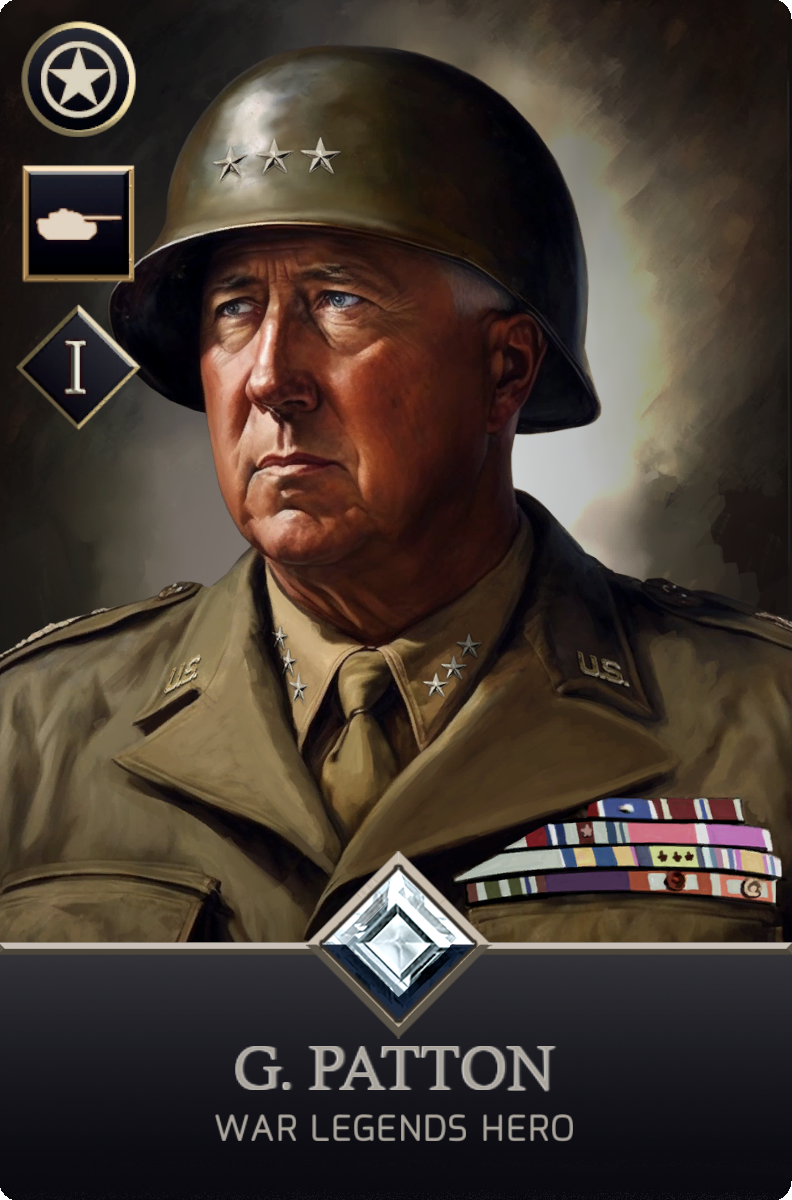


Hero Background
Born on 11 November 1885 in San Gabriel, California, USA, Patton was a member of a great military lineage dating back to the war of independence and the Confederate side, and possessed a large family estate that made Patton one of the richest military men in the United States.
After graduating from West Point, he joined the Corps of Cadets. Soon after, Patton married Batrice.
In 1912 Patton participated in the Stockholm Olympics representing the United States.
At the beginning of the United States' entry into World War I, Patton was promoted to captain and was given command of a unit of the newly created Tanks Corps in France. Shortly after, he was double promoted to lieutenant colonel, receiving full command of the Tanks Corps.
The war ended while Patton was recovering from being wounded when he was hit by a machine gun at the Battle of St. Mihiel while helping a tank that was immobilized due to mud in 1918.
In 1942, the heavy cruiser USS Augusta arrived in Casablanca, but not before being attacked by the French ship Jean Bart, while carrying the first US armored corps commanded by Patton in Operation Torch.
The Americans would soon suffer their first defeat at the Battle of Kasserine Pass in 1943 at the hands of the Afrika Korps.
In March 1943 Patton launched an offensive that pushed the Germans back against the British Eighth Army, then commanded by Montgomery.
Thanks to the successful North African campaign, Patton was given command of the US Seventh Army which was making preparations to liberate the western part of Sicily, while Montgomery's Eighth Army was liberating the eastern part of the island, but Patton, who considered Montgomery a stiff-necked pushover and refused to let him take the glory, pushed forward quickly through the west, taking Palermo towards the city of Messina, always ahead of Montgomery.
Patton was temporarily relieved of his command because of his fiery speeches which are said to have induced the murder of sixty-six prisoners of war at Biscari, in addition to that Patton assaulted soldiers suffering from combat stress, for which Patton came close to ending his military career were it not for the intervention of his friend General Bradley and the intervention of Heisenhower.
During the period in which Patton was relieved, he was used as a decoy for the Germans, being moved around as required to divert the attention of the Nazis, indeed Patton was so feared by the Germans that he caused this effect.
This American tactic would be taken to a higher level in the months leading up to the Normandy landings with a campaign of enemy deception that included, radio broadcasts with false information, the construction of barracks, inflatable armored vehicles to fool Luftwaffen reconnaissance ships, and even a new dummy corps called "FUSAG" which Patton "commanded" in a dummy manner.
All this trickery was aimed at shifting the Germans' attention from Normandy beach to Calais.
After the Normandy landings, Patton in command of the US Third Army used Blitzkrieg tactics against the Nazis themselves, liberating southern France while French General Leclerc liberated the interior.
During the Ardennes offensive of 1944, Patton was recognized for his most brilliant intervention when in north-eastern France the Wehrmacht sent a total of 250,000 men into the Allied lines. Patton suddenly led the Third Army north to liberate the 101st Airborne Division, which was blocked at Bastogne, and as a result the offensive was neutralized and the Germans beat a retreat.
For this action Patton was promoted to General
George S. Patton was seriously injured in a car accident and died on 21 December 1945.
His body was buried in the US military cemetery of Hamm in Luxembourg.








